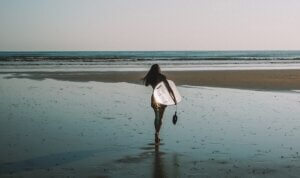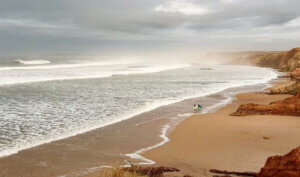Thrill seekers and adrenaline junkies have long ventured to Spain thanks to some of its most well-known adventures and activities, such as the running of the bulls in Pamplona or caving in Andalucia.
But there is quite possibly no bigger thrill in Spain than riding the waves along its majestic coastline. Surfers have since long, flocked to Spain from all parts of the globe to experience its point breaks along the Atlantic while immersing themselves in the country’s sights, sounds, and flavors.
If surfing in Spain during your holiday is in your future, read on to learn everything you need to know about the seasons, weather, and swells as you plan your trip.
Surfing in Spain: when is it the best time to hit the waves?
Spain has what is known as the ideal swell consistency and is a popular destination in Europe when in comes to surf. For surfers, this means the waves can be found year-round along the coast. Additionally, Spain enjoys a mild Mediterranean climate, so travelers can enjoy exploring the country at any time of year.
If you plan a surf trip to Spain, it’s best to match the season to your skill level.
Late spring to late summer (May to August) would be the best time for beginners to visit a surf camp in Spain. During the summer half of the year, the waves are smaller and more manageable for those with little to no experience on a board. However, during peak summertime, there may also be the occasional flat spell (meaning no waves at all) every once in a while
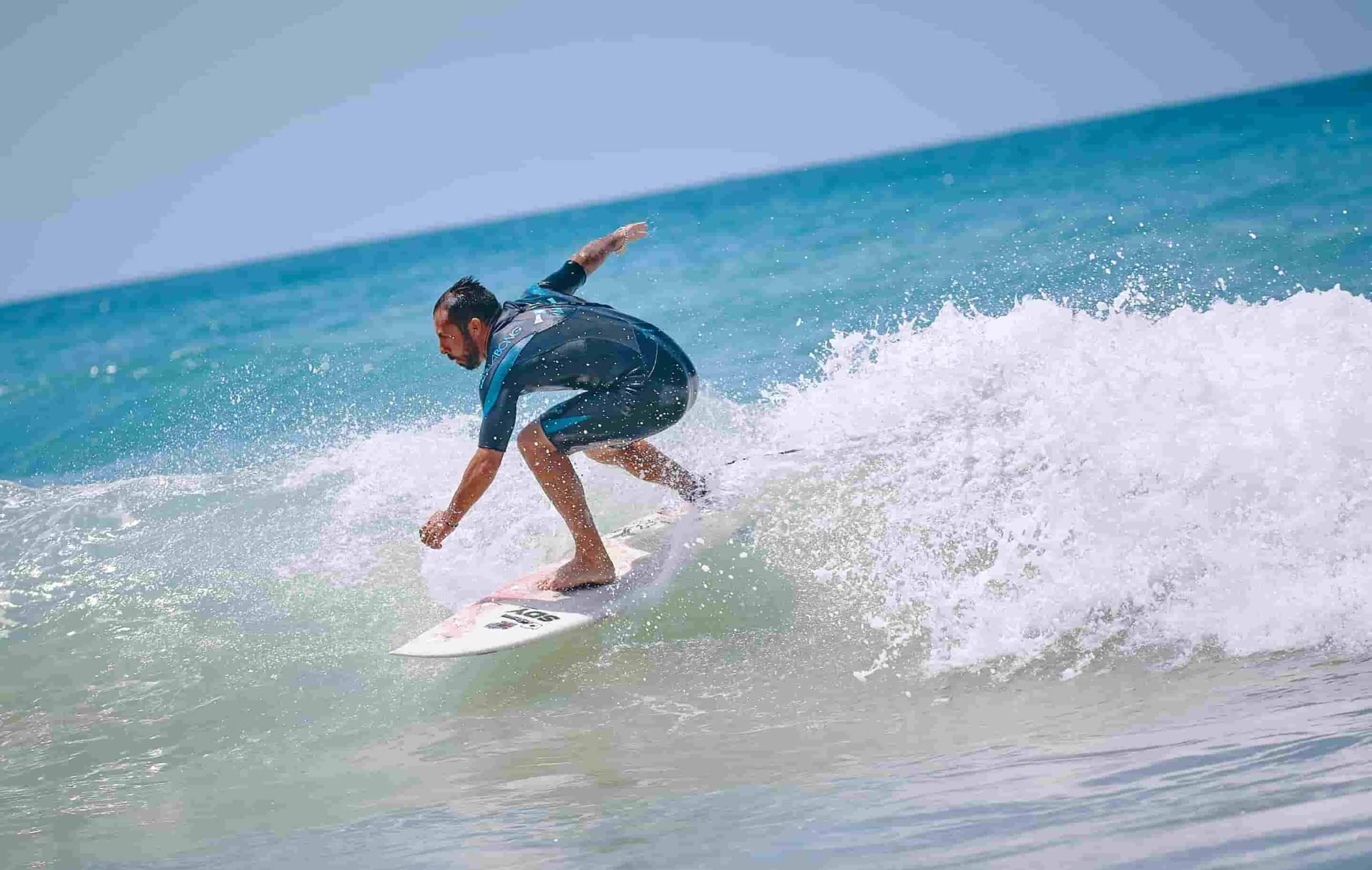
Intermediate and advanced surfers are better off aiming for the fall and winter months up through early spring. In general, September to April is a timeframe more seasoned surfers should look at when booking surf trips to Spain.
Surfing in Spain: What to Know About the Weather
Summertime brings abundant sunshine in Spain–along with crowds to the beaches! Looking at the Northern Atlantic coastline, you will see an average water temperature of 70.2⁰F (21.2⁰C) in August. By February, the waters will reach their coldest temperatures, averaging 54.5⁰F (12.5⁰C).
Spain is generally hot and dry in the summer, with the winter months receiving the most rainfall, especially in the northern part of the country. While the abundant sunshine may make the summer months appealing for surf travel, one downside is the crowds. This is also another reason why more experienced surfers are willing to brave the colder waters in the winter months, which bring less crowded beaches and bigger swells.
Surfing in Spain: What to Know About the Swells
On average, surfers can expect the waves to reach 3 to 4 feet in summer, then increase to 5 to 6 feet in winter. Winter is the peak season for advanced surfers: the heavy, consistent swell brings tubing waves and great days in the water for seasoned pros.
However, be aware that if there are storms in the Atlantic, which tend to happen more often in the wintertime, the waves may even be too big for the most advanced surfers. And once the storms reach the coast, most spots will be too blown out, and it will be too windy to surf.
That’s why, in general, the best seasons for surfing in Spain really are fall and spring.
As thrilling as the waves may be, some days in the winter will be cold and soggy, especially in the northern region, so come prepared with full-body wetsuits and booties.
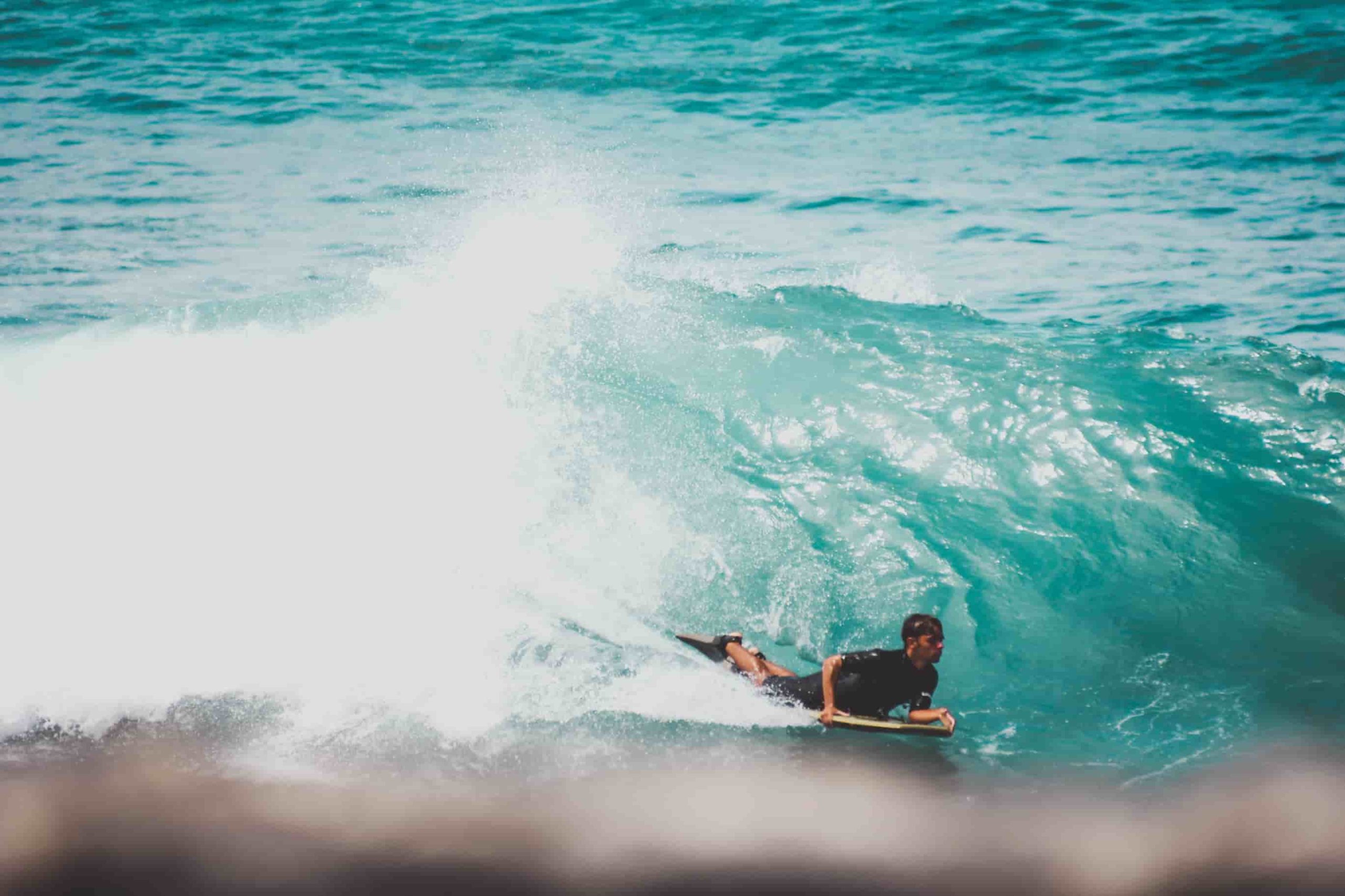
Our favorite spots for surfing in Spain
When planning your surf trip to Spain, there are plenty of destinations, from quaint fishing towns to large, cosmopolitan cities, that a surfer will love. For some travelers, the swells are all that matter; however, others might be interested in sightseeing, enjoying local cuisine, and participating in other activities beyond their favorite surf spot.
These are the best surf spots to explore, because they offer something for everyone.
Barcelona
Its Mediterranean Sea setting means you will not find the biggest waves here, and it will for sure be completely flat in the summer. However, beginners can still try their luck while visiting the country’s second-largest city during the winter half of the year. Barceloneta Beach is the best spot to try. The swells can be inconsistent, but with some luck and timing, you have a good chance of catching some waves here during the winter.
If you’re planning a major surf trip, bypass Barcelona and head to one of the more reliable spots outlined below; however, if your travels take you to Barcelona for other reasons, you can always carve out a day to try the surf.
Cadiz
Cadiz sits just northwest of the Gibraltar Strait, where the Mediterranean Sea gives way to the Atlantic, and is a popular spot for Spanish surf camps. At 9 Pies Surfschool, you can book a 7-night package with 5 days of surf instruction, including wetsuits and boards. October and November are the high season months for this camp, and is your best chance of finding some amazing waves. Besides regular surfing, Cadiz is also a top spot for Kite surfing, so don’t miss out on giving kiting a go if you’re here.
A little bit further south of Cadiz you also find the small picturesque surf towns of El Palmar and Conil de la Frontera, we highly recommend these spots in the spring and fall.
San Sebastian
This beautiful town in Basque Country is one of the world’s most popular destinations for surfing and hosts numerous surf competitions from spring to autumn each year, as well as a popular surf film festival.
El Aula Azul offers visitors a chance to immerse themselves in both the waves and the culture with a unique combination of surf and an immersive language camp. Daily surf lessons and 20 Spanish lessons are included, along with a surfboard, wetsuit, and six nights’ accommodations.
Besides surfing, San Sebastian is also famous for its Pinxthos, a delicious tapas-style food, not to be missed!
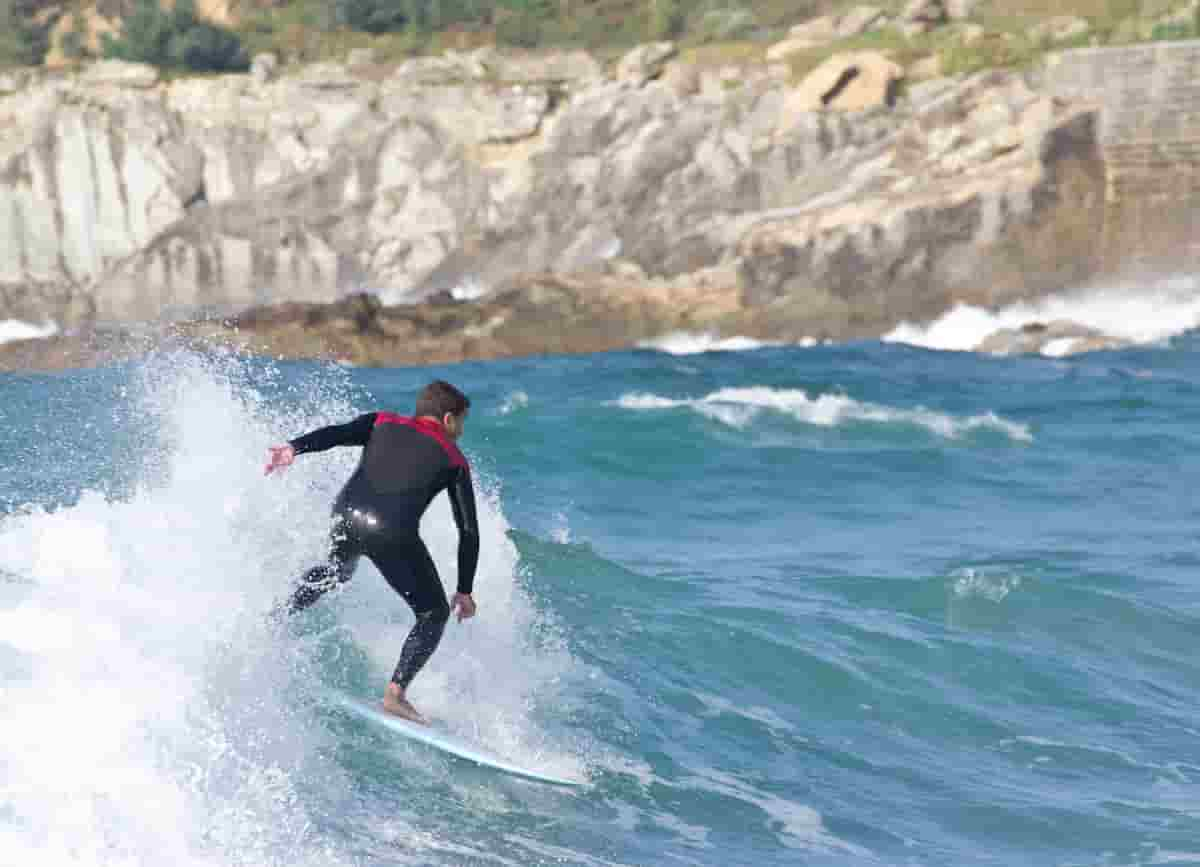
San Vicente de la Barquera
This small town in Northern Spain has fewer than 5,000 residents but draws in many visitors thanks to its stunning seaside vistas with the Picos de Europa as a majestic backdrop. Star Surf Camp offers 7-night packages in tent sites—mattresses and electricity hookups included—for beginner to intermediate surfers, with other activities such as yoga and stand-up paddleboarding included.
Playa de Somo
This beautiful beach sits across the bay from Santander, and visitors interested in surfing the area can book a package with Escuela Cantabra De Surf Quicksilver Roxy, which prides itself on being the first surf school established in Spain. They cater to all ages and all skill levels, with high-quality shortboards and longboards available to participants.
Mundaka
Mundaka is magical in the right conditions—usually in late autumn or winter—when the northwest Atlantic groundswells face the southwest offshore winds.
The waves here have made Mundaka Beach the surfing capital of Spain, and pros and amateurs alike flock to this remote Basque Country town. It is not the easiest spot to get to—the closest airport is Bilbao, a 30-minute drive away—but it’s well worth the trip for those who want to experience some of the most thrilling surfing in Spain.
Waves here can reach as high as 12 feet (3.6 meters), so Mundaka is the undisputed favorite among advanced surfers.
Canary Islands
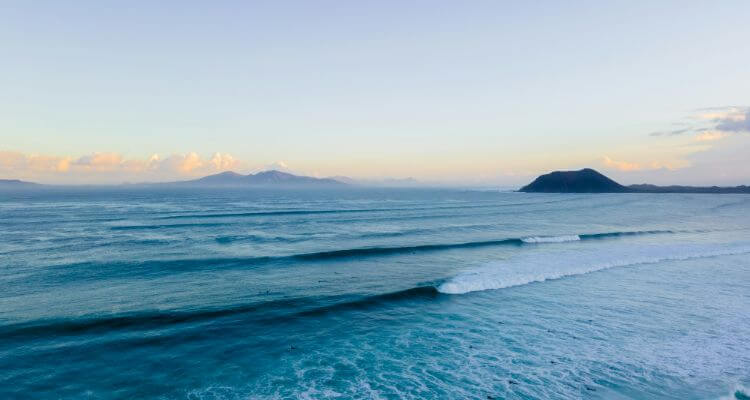
If you venture off the mainland, surfing is also hugely popular in the Canary Islands, a Spanish archipelago close to the African coast. High Voltage Adventure offers two daily surf sessions in a 7-night package with equipment and airport transfer included.
Beyond the surf, the Canary Islands offer an abundance of activities for visitors, from impressive archaeological sites to plentiful shopping and dining.
If you’re looking for the perfect mix of warm weather together with amazing waves during the European wintertime, the Canaries should definitely be high on your list.



